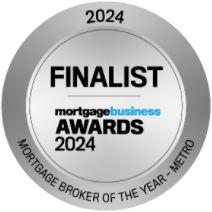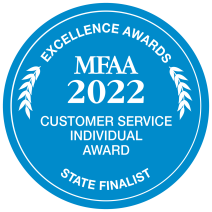
Assets – An asset is anything you own that is worth money, including any property, savings, stocks or funds.
Basic Loan – A basic home loan is a home loan which is light on features and as a result, the loan has a lower interest rate and doesn’t contain an annual fee. This type of home loan is useful for borrowers who won’t want the bells and whistles, and would rather focus on lowering their periodic repayments and ongoing costs.
Basis Point – One basis point equals 0.01% interest. So 25 basis points equals 0.25%.
Break Cost – Relates to fixed rate loans where the borrower terminates the loan contract before the expiry of the fixed rate period
Bridging loans – Bridging loans are designed as short-term financing options for borrowers who need funding to buy a new residence before selling their existing home. The interest rates on these loans are higher than the standard variable interest rate.
Capital Gain Tax – A federal tax on the monetary gain made on the sale of an asset bought after September 1985. The tax does not apply to the gains made on the sale of an owner-occupied residence, so it generally applies only to investment properties.
Capital Growth – The amount by which proceeds from the sale of property exceeds the original purchase price
Comparison Rate – Includes both the interest rate and most of fees and charges that are payable over the life of your loan. It’s especially useful to compare the comparison rate between different lenders (note: redraw and early repayment fees, or fee waivers are not included and may affect the cost of your loan).
Construction loans – These loans allow amounts of finance to be drawn down progressively to cover the various stages of a construction project. Repayments (generally only on interest for the first 12 months, then principal and interest thereafter) are only made on the amount of the loan facility that has been drawn down. However, there are line fees on the undrawn amount, or in most cases on the total facility limit.
Conveyancing – The legal process of transferring ownership of your new home from the seller to you.
Discharge of Mortgage – A document signed by the lender and given to the borrower when a mortgage loan has been repaid in full.
Equity – If you’ve borrowed money to buy an asset, the equity is the difference between the value of the asset and how much you still owe on the loan you got to purchase it.
Family Guarantee – Also known as a guarantor home loan, a family guarantee can be used to secure a property when there is a shortfall in the deposit amount the borrower has. Parents or a close family member can become a guarantor using their own property to secure the loan. As much as 100 per cent of the purchase price, plus costs can be borrowed under this arrangement, making entering the property market achievable for those lucky enough to have a guarantor.
Fixed-rate loans – Fixed loans allow you to lock in a specific interest rate over a set period of time, generally between one and five years. This loan is popular among borrowers who want to ensure their repayments don’t rise. The main risk is that if variable rates fall, you are locked in at a higher rate. The cost of breaking a fixed rate loan contract can be substantial, and there can be financial penalties for making additional payments.
Honeymoon Rate – A lower interest rate offered at the start of your loan (ie. the ‘honeymoon period’) which reverts to a standard variable rate after the honeymoon period ends.
Liabilities – The amount you owe to creditors (e.g. credit cards, personal loans, home loans etc.)
Line-of-credit and Interest Only facilities – This is a way of tapping into equity in an existing home and drawing down funds as required for different purposes, such as renovations. Similar to a credit card, repayments are only made on the amount drawn down. Line-of-credit loans are often interest-only for a significant period, but can revert to principal and interest repayments down the track. Most lenders charge extra for line of credit accounts, either through a facility fee, undrawn funds fees and/or a higher interest rate. While they can be a good solution for some people, quite often a simple Interest Only loan will give the same features at a much cheaper rate.
LMI – Lenders Mortgage Insurance (LMI) is a one-off insurance payment which covers the lender in case you can’t make your repayments. Required for home loans with a loan to value ratio (LVR) over 80%.
Low-doc loans – Mortgage lenders require you to provide evidence of your ability to meet loan repayments, but this can be a problem for non-salaried workers such as self-employed workers. Low-doc loans require less proof-of-income paperwork, but the interest rate levied is often higher than the standard variable rate.
LVR – Your loan amount divided by the appraised value of the property. Example? If your property valuation is $300,000 and your loan is $240,000, then the LVR is 80%.
Negative Gearing – Where the return on an investment is insufficient to meet the costs of the investment, leading to a reduction in assessable income for taxation purposes
Non-genuine savings loans – It is preferable for borrowers to show they have the ability to save funds over time to cover their repayments. If a deposit is accrued quickly due to an inheritance or from other sources, lenders may provide less funding and require lenders mortgage insurance. Lenders mortgage insurance is a one-off insurance payment that covers the bank in case you can’t make your repayments. It is usually required for home loans with a loan-to-value ratio (LVR) over 80%.
Offset – This is an account which can be linked to your home or residential investment account. The balance of the offset account reduces the amount of interest payable on the linked loan. You can access the money that’s in the offset account.
Portability – The ability to ‘move’ a loan from one security (property, term deposit, etc.) to another. For instance, you can use your current loan to buy a new home, then swap the security from your current loan to your new home.
Professional or packaged loans – Mortgages that provide ‘lifetime’ discounted interest rates, fee waivers and linked savings accounts and credit cards are referred to as professional or packaged loans, which are generally offered on high loan amounts.
Rate Lock – Let’s you lock in a fixed interest rate quote for three months when your loan’s approved. If interest rates go up before the loan drawdown date, you’re guaranteed the original rate.
Redraw – A component of a variable rate loan which enables a borrower to make extra repayments on their loan but they can later redraw this money if required.
Rental Return/Yield – Income that is earned from a property that is typically expressed as a percentage of the value of the investment.
Security – An asset (eg. property, term deposit etc.) that’s used to secure your loan.
Self Managed Super Fund Loans – The rules around borrowing funds within a self-managed superannuation fund are complex. Borrowings with a SMSF must be undertaken through a limited recourse borrowing arrangement, which limits the recourse of the lender to a single asset.
Serviceability – A borrower’s ability to make repayments (service) on the loan when payments are due.
Settlement – The completion of the sale transaction. Final payments are made at settlement in exchange for the relevant documents. The purchaser can then take ownership of the property.
Split-rate loans – You can take out a mortgage with one portion of the loan variable, and the other fixed. In many ways, this offers the best of both worlds and you have the flexibility to repay more on the variable loan and reduce risk through the fixed loan.
Stamp Duty – Stamp duty is a tax you pay to the state or territory government when a property is sold.
Variable loans – Variable loans are subject to interest rate fluctuations, which means the amount you repay changes when your lender increases or decreases interest rates. With a variable loan you will end up either paying more or less for your loan, depending on what the bank has decided to do.























